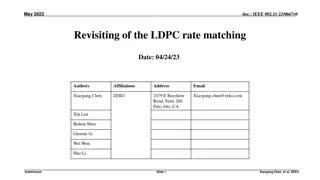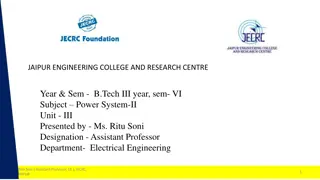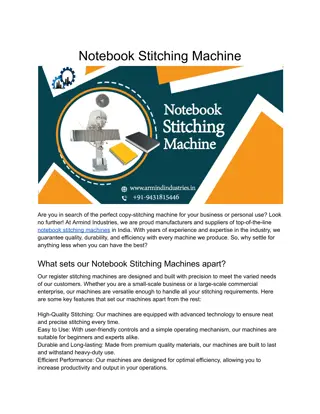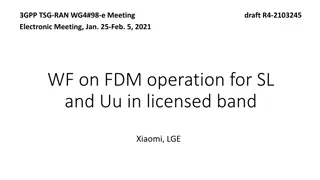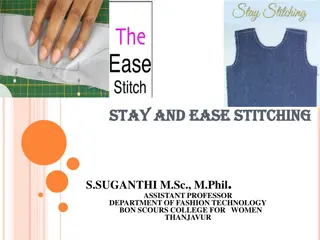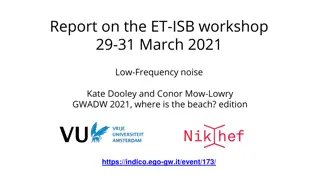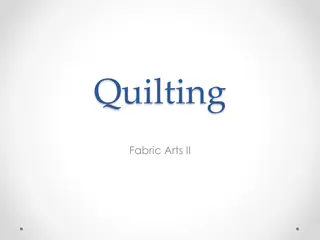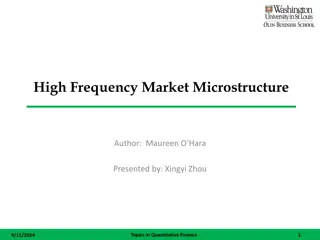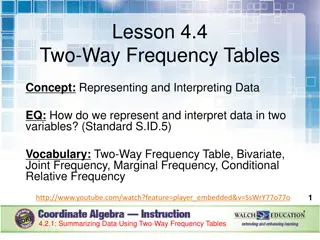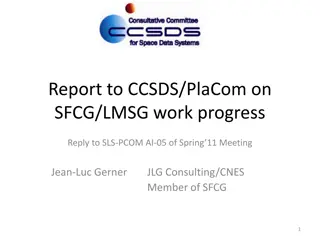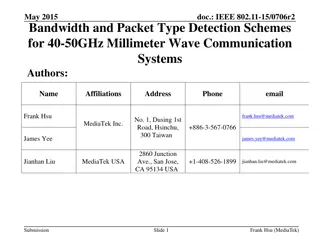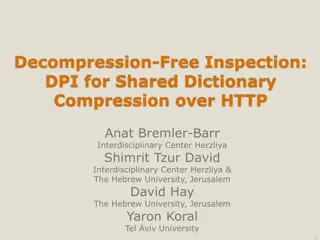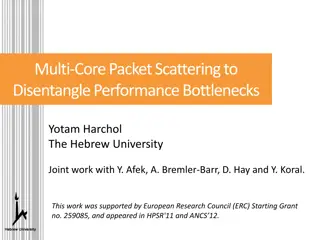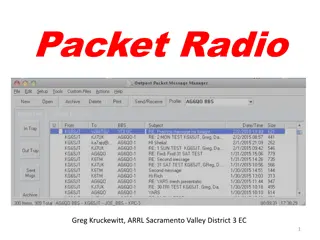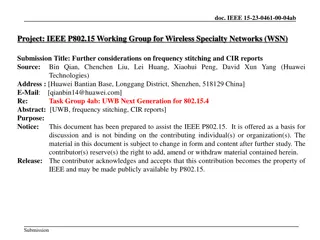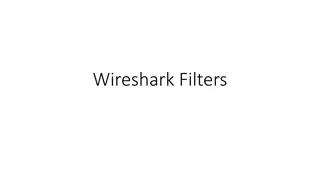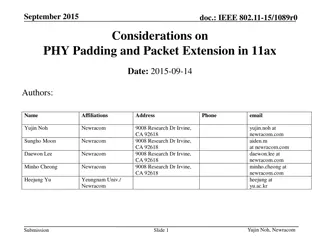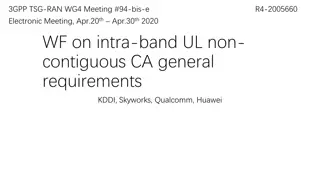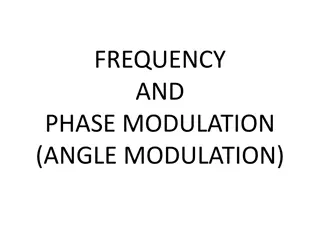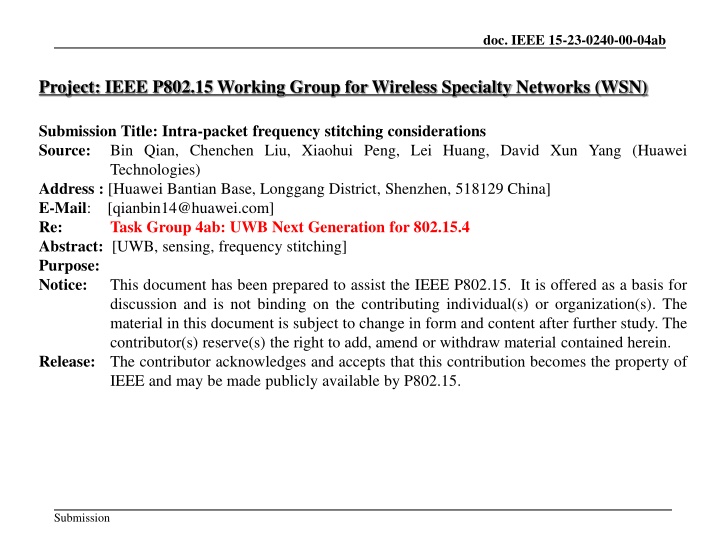
Intra-packet Frequency Stitching Considerations for Wireless Specialty Networks
Explore the importance of intra-packet frequency stitching in wireless specialty networks, addressing issues such as interference mitigation, coexistence improvement, and enhanced link budget. This document delves into the proposed solutions to support various data use cases while maintaining backward compatibility and ensuring high throughput.
Uploaded on | 3 Views
Download Presentation

Please find below an Image/Link to download the presentation.
The content on the website is provided AS IS for your information and personal use only. It may not be sold, licensed, or shared on other websites without obtaining consent from the author. If you encounter any issues during the download, it is possible that the publisher has removed the file from their server.
You are allowed to download the files provided on this website for personal or commercial use, subject to the condition that they are used lawfully. All files are the property of their respective owners.
The content on the website is provided AS IS for your information and personal use only. It may not be sold, licensed, or shared on other websites without obtaining consent from the author.
E N D
Presentation Transcript
doc. IEEE 15-23-0240-00-04ab Project: IEEE P802.15 Working Group for Wireless Specialty Networks (WSN) Submission Title: Intra-packet frequency stitching considerations Source: Bin Qian, Chenchen Liu, Xiaohui Peng, Lei Huang, David Xun Yang (Huawei Technologies) Address : [Huawei Bantian Base, Longgang District, Shenzhen, 518129 China] E-Mail: [qianbin14@huawei.com] Re: Task Group 4ab: UWB Next Generation for 802.15.4 Abstract: [UWB, sensing, frequency stitching] Purpose: Notice: This document has been prepared to assist the IEEE P802.15. It is offered as a basis for discussion and is not binding on the contributing individual(s) or organization(s). The material in this document is subject to change in form and content after further study. The contributor(s) reserve(s) the right to add, amend or withdraw material contained herein. Release: The contributor acknowledges and accepts that this contribution becomes the property of IEEE and may be made publicly available by P802.15. Submission
Slide 2 doc. IEEE 15-23-0240-00-04ab PAR Objective Safeguards so that the high throughput data use cases will not cause significant disruption to low duty-cycle ranging use cases Interference mitigation techniques to support higher density and higher traffic use cases Other coexistence improvement Backward compatibility with enhanced ranging capable devices (ERDEVs) Improved link budget and/or reduced air-time Proposed Solution (how addressed) Additional channels and operating frequencies Improvements to accuracy / precision / reliability and interoperability for high-integrity ranging Reduced complexity and power consumption Hybrid operation with narrowband signaling to assist UWB Enhanced native discovery and connection setup mechanisms Sensing capabilities to support presence detection and environment mapping Low-power low-latency streaming Higher data-rate streaming allowing at least 50 Mbit/s of throughput Support for peer-to-peer, peer-to-multi-peer, and station-to- infrastructure protocols Infrastructure synchronization mechanisms Intra-packet frequency stitching Submission
May 2023 doc. IEEE 15-23-0240-00-04ab Reference [1] IEEE 802.15/22-061r0, Sensing Continued [2] IEEE 802.15/22-422r0, UWB Sensing - Scheduling [3] IEEE 802.15/23-178r0, Frequency Stitching Considerations [4] IEEE 802.15/23-079r1, Latest Consensus on UWB Sensing for 802.15.4ab Submission Slide 3 Bin Qian, Huawei
May 2023 doc. IEEE 15-23-0240-00-04ab Recap: Intra-packet Frequency Stitching The frequency stitching is discussed in [1-3] to improve the effective bandwidth of sensing by aggregating multiple frequency segments together. The time to obtain each measurement should be less than the coherent time of the channel. The coherent time is scenario dependent and ranges from several nanoseconds to several milliseconds. In [3], the intra-packet frequency stitching is introduced where different portions (e.g., SENS segments) of the packet are transmitted over different UWB channels. The intra-packet frequency stitching could have shorter total time span per measurement update. Submission Slide 4 Bin Qian, Huawei
May 2023 doc. IEEE 15-23-0240-00-04ab Recap: Sensing Packet Structure Sensing packet format [4] Sensing field could have 1 (mandatory), 2, 3, 4 (optional) segments When multiple segments are used, gaps are included between segments. The duration of each gap interval is one SENS symbol. Submission Slide 5 Bin Qian, Huawei
May 2023 doc. IEEE 15-23-0240-00-04ab Problem Due to the hardware limitation, the frequency switch time spans from tens of microseconds to one hundred microseconds. The duration of the gap is about one microsecond, which is not long enough to support the frequency switch. Thus, to enable the intra-packet frequency stitching, the frequency switch time needs to be taken into account. Submission Slide 6 Bin Qian, Huawei
May 2023 doc. IEEE 15-23-0240-00-04ab Possible Solution According to the gap duration, the gap could be classified as the normal gap and the extended gap When the intra-packet frequency stitching is disabled, the duration of each gap interval is one SENS symbol When the intra-packet frequency stitching is enabled, the duration of each gap is extended such that the frequency switch is performed Normal gap duration Extended gap duration The duration of the sensing segment will not be changed Submission Slide 7 Bin Qian, Huawei
May 2023 doc. IEEE 15-23-0240-00-04ab Summary To achieve intra-packet frequency stitching, the frequency switch time needs to be taken into account The extended gap duration could be used when the intra-packet frequency is enabled Submission Slide 8 Bin Qian, Huawei
May 2023 doc. IEEE 15-23-0240-00-04ab Thank You Submission Slide 9 Bin Qian, Huawei

